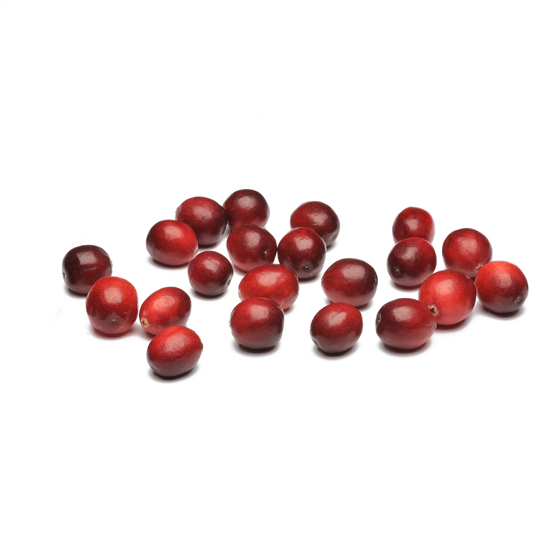Storage advice
The fruits will last a few days longer in the fridge, but they can also be frozen to keep them even longer.
A wintry berry delicacy

Nothing says winter more than EAT ME cranberries. In the festive month of December, cranberries grace the shelves of every supermarket. Their glowing, ruby hue makes them perfect for many dishes. But a cranberry offers much more than purely decorative value. The taste is very characteristic. The round or oval berry has a distinctive, tangy flavour. Fans of game know the fruit as the perfect companion to game.
The white flesh is also a source of inspiration for many other healthy recipes. Cranberries contain a lot of vitamin C: important for the blood vessels, to support the bones and it contributes to maintaining a normal energy balance.
Cranberries are often used in sauces and compotes. If you want to give a cake a real Christmas makeover, the cranberry is an ideal ingredient. And every chef familiar with the culinary classics knows how to make an authentic cranberry sauce with game dishes.
Cranberries do require a little preparation. Due to their very sharp and sour taste, cranberries are an acquired taste raw. If you dare, rinse well and remove the stalk first.


The fruits will last a few days longer in the fridge, but they can also be frozen to keep them even longer.
Cranberries are a source of vitamin A, a vitamin that improves your eyesight and is good for mucous membranes. Cranberries are also a source of vitamin C, so they provide you with a vitamin that is very beneficial for your body. For example, it improves your concentration, reduces fatigue and facilitates your iron uptake. Vitamin C is also an antioxidant: it protects body cells from outside influences.
Whereas we usually have suppliers in various countries, cranberry growing is limited to North America and Canada. Growers harvest the fruits in fields that are partially submerged under water when the fruits are ripe. The water used to flood the fields is churned to release the berries from the bushes, so they float to the surface. Machines collect the cranberries in the water and a floating belt transports the fruits to small boats. A crane hoists the boats from the water and the boats are then emptied into trailers. After the harvest, all the water is pumped away again.
